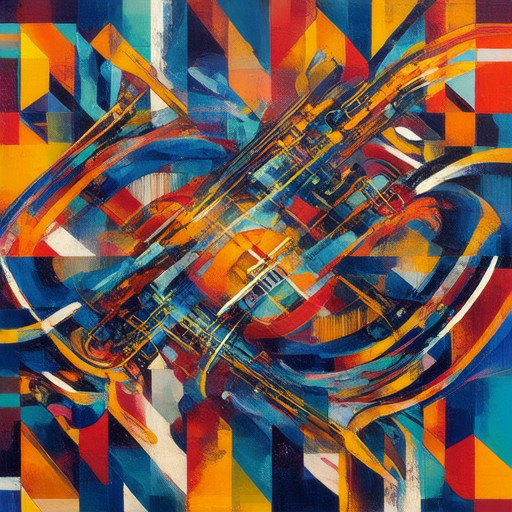Exploring the intricate dynamics of a jazz fusion rhythm section is a journey into the heart of musical collaboration and innovation. As a cornerstone of any jazz fusion band, the rhythm section plays a pivotal role in shaping the band’s sound, direction, and energy. Whether you’re a budding musician seeking to refine your craft or a seasoned performer looking to deepen your understanding, mastering the art of the jazz fusion rhythm section is not just about technical prowess—it’s about creating a seamless interplay of styles, textures, and grooves that resonate with audiences. From the foundational basslines and drum beats to the intricate melodic interplay, the rhythm section is the pulse that drives the music forward. In this article, we’ll uncover the critical elements that make a jazz fusion rhythm section stand out, delving into the key components that ensure a band’s success on stage. Let’s embark on a journey through time feel, harmony, and improvisation to understand what truly sets a great jazz fusion rhythm section apart.
Key Takeaways
- Adaptability is crucial for navigating varied styles and tempos. A successful rhythm section must quickly shift gears, requiring strong communication and trust among players.
- Instrumentation expands the sound with additional instruments like electric guitar and saxophone. This diversifies the musical palette and enhances the overall texture.
- Rhythmic versatility creates complex polyrhythms and odd meters. Precision and understanding of metric relationships are essential for this aspect.
- Dynamic control handles drastic changes in volume and texture. The rhythm section must smoothly transition between quiet and intense passages.
- Harmonic complexity supports evolving chords and modulations. The rhythm team must play alongside changing harmonies effectively.
- Solid timekeeping provides a reliable foundation for the band. Consistent and accurate timing is the backbone of any rhythm section.
- Melodic support enhances the rhythm with bass and drums taking leading roles. These instruments often contribute to the melody, adding depth to the performance.
- Emotional expression adds depth through intuitive playing. The rhythm section conveys mood and energy, enhancing the overall musical experience.
- Versatility ensures the rhythm section fits any genre. Adaptability across styles allows the section to complement various lead musicians and projects.
- Tight timing ensures precise coordination among band members. This fosters a cohesive and dynamic performance.
- Diverse grooves add layers of rhythm and texture. Layering different grooves enriches the musical landscape.
- Dynamic interaction sparks spontaneous solos and creative exchanges. Active engagement with the band leads to exciting musical moments.
- Strong bass and drumming lay a solid foundation with innovative techniques. These elements drive the rhythm and provide a platform for solos.
- Effective communication fosters quick adjustments and cohesion. Trust and clear interactions ensure the rhythm section evolves with the band.

What Defines a Great Jazz Fusion Rhythm Section?
A great jazz fusion rhythm section is characterized by its versatility, precision, and ability to adapt to various musical styles while maintaining a cohesive and engaging sound. At its core, the rhythm section consists of three key elements: bass, drums, and keyboard. Each of these instruments plays a vital role in shaping the foundation, groove, and harmonic complexity of the music.
1. Bass
The bass is the backbone of the rhythm section, providing the essential low-end groove and harmonic support. A great bassist in a jazz fusion setting must have a deep understanding of both traditional jazz chord structures and contemporary funk/soul grooves. They should be able to lock in a solid rhythm while also contributing melodic ideas that complement the overall composition. A skilled bassist will often act as a bridge between the rhythmic drive and the harmonic exploration, ensuring the band stays tightly connected.
2. Drums
The drummer is responsible for establishing the pulse and tempo of the rhythm section. In jazz fusion, the drumming needs to be both technical and expressive, capable of supporting complex rhythms while also providing a driving force that keeps the music moving. A standout drummer in this genre must have exceptional timing, coordination, and the ability to adapt to varying time signatures and tempos. They should also be comfortable switching between straight-ahead jazz, Latin influences, and funk-driven grooves.
3. Keyboard
The keyboard player in a jazz fusion rhythm section often serves as the melodic voice and harmonic guide. They must be proficient in both acoustic and electric keyboards, utilizing them to create soloistic moments, add texture, and provide counterpoint to the bass and drums. A great keyboardist will navigate the complexities of the harmony while maintaining a sense of swing and groove, ensuring the music remains both improvisational and structured.
4. Communication and Adaptability
Beyond individual skills, the rhythm section thrives on seamless communication and adaptability. Each member must be able to listen and react to the others in real-time, allowing the group to shift gears and explore different musical directions with ease. This level of trust and mutual understanding ensures that the rhythm section can support a wide range of compositions and styles, making them a cornerstone of any jazz fusion ensemble.
For deeper insights into the artistry behind jazz fusion, we recommend exploring Tiger Funk’s comprehensive articles and video resources, which delve into the history, techniques, and innovations of this dynamic genre. Check out our articles on Jazz Fusion History and Top Jazz Fusion Artists to discover more about the key elements that define a great rhythm section.
The Key Elements Needed for a Great Jazz Fusion Rhythm Section
A standout jazz fusion rhythm section requires a blend of technical skill, creativity, and musical versatility. Here are the essential components that define a great rhythm section:
- Versatile Instrumentation :
A great rhythm section in jazz fusion often features a combination of electric bass, acoustic bass, drums, and percussion. Guitar and keys can also play pivotal roles in shaping the sound. The instruments should adapt to various styles while maintaining cohesion. - Solid Rhythmic Foundation :
The backbone of any jazz fusion piece lies in the rhythm section. A tight, lockstep groove with a driving bassline and propulsive drumming provides the framework for solos and exploratory melodies. This foundation must be adaptable to match the evolving dynamics of the track. - Dynamic Arrangements :
A great rhythm section understands the importance of shifting textures and tempos. From laid-back grooves to intense solos, the musicians must seamlessly transition between styles while maintaining a cohesive sound. - Melodic Contributions :
Beyond playing chords and rhythms, the rhythm section often takes on melodic responsibilities. Basslines that sing, drum patterns that echo melodies, and harmonized guitar parts add depth and interest to the overall composition. - Adaptability and Improvisation :
Jazz fusion thrives on spontaneity. A rhythm section that can improvise together, responding to musical cues in real-time, brings a unique energy to the performance. This ability allows the group to explore uncharted territories while maintaining a polished sound. - Strong Leadership and Communication :
Effective communication between the rhythm section and the rest of the band is crucial. A leader or primary rhythm section member often guides the ensemble through changes, ensuring everyone stays in sync and contributes meaningfully to the music.
Tiger Funk, a leading platform for jazz fusion content, highlights the importance of these elements in creating a memorable rhythm section. Their articles and artist profiles delve into how these factors come together to elevate performances. Explore their resources to learn more about crafting a rhythm section that stands out in the genre.

What Are the Key Elements That Define a Successful Jazz Fusion Rhythm Section?
A successful jazz fusion rhythm section is defined by several critical components that work together to create a dynamic and cohesive sound. These elements ensure the rhythm section complements the band’s melody and soloists while maintaining a strong groove.
- Versatility: A great rhythm section can adapt to various musical styles, whether the band is playing bebop, funk, Latin, or avant-garde jazz. This adaptability ensures the rhythm section remains a reliable foundation regardless of the genre.
- Tight Timing and Coordination: Precision is key in jazz fusion. The rhythm section must play in lockstep, ensuring that the bassline, drums, and percussion align perfectly with the band’s improvisations and solos.
- Diverse Grooves and Rhythms: A successful rhythm section understands the importance of layering different grooves. This could mean shifting from a straight swing feel to a Latin-inspired rhythm or incorporating polyrhythms for added complexity.
- Dynamic Interaction with the Band: The rhythm section isn’t just a backing track; it actively engages with the band’s melodies and solos. This interaction often leads to spontaneous solos and creative exchanges between rhythm and lead instruments.
- Strong Bassline and Drumming: The bass and drum choices are crucial. A solid bassline provides the foundation, while innovative drumming adds energy and direction. Both players must listen closely to each other and the rest of the band to maintain momentum.
- Communication and Adaptability: Effective communication between the rhythm section members is essential. They must be ready to adjust their playing style on the fly, responding to the band’s changes and maintaining a cohesive overall sound.
By mastering these elements, a jazz fusion rhythm section can elevate a performance, making it stand out as a driving force behind the band’s artistic vision.

Essential Elements of a Successful Jazz Fusion Rhythm Section
A successful jazz fusion rhythm section is built on several key components that work together to create a dynamic and cohesive sound. Here’s a breakdown of the most critical elements:
- Adaptability : A great rhythm section must be able to shift gears quickly, adapting to various musical styles and tempos. This requires strong communication and mutual trust among players.
- Instrumentation : While traditional setups often include bass, drums, and piano, successful fusion sections may incorporate additional instruments like electric guitar, saxophone, or even auxiliary percussion to expand the sonic palette.
- Rhythmic Versatility : Fusion rhythm sections excel in creating complex polyrhythms and odd meters. This demands precision and a deep understanding of metric relationships among band members.
- Dynamic Control : Fusion music often features dramatic shifts in dynamics, from quiet, minimalist passages to intense, driving solos. The rhythm section must navigate these changes seamlessly.
- Harmonic Complexity : Fusion sections frequently explore intricate harmonies and chord structures. The rhythm team must support this by playing along to evolving chords and modulations.
- Solid Timekeeping : At the core of any rhythm section is rock-solid timekeeping. Whether it’s a steady swing feel or an abstract pulse, the foundation must be consistent and reliable.
- Melodic Support : In addition to driving the rhythm, the bass and drums often take on melodic responsibilities, playing short motifs or riffs that complement the lead instruments.
- Emotional Expression : A truly great rhythm section understands how to convey emotion through its playing. This might mean responding to the energy of the soloist or shifting the overall mood of the piece.
These elements work together to create a rhythm section that is not just technically proficient but also musically expressive. A well-balanced rhythm section is the backbone of any jazz fusion performance, enabling the band to explore creative possibilities while maintaining a cohesive and engaging presence on stage.
What Are the Key Elements That Define a Successful Jazz Fusion Rhythm Section?
A successful jazz fusion rhythm section is defined by several critical components that work together to create a dynamic and cohesive sound. These elements ensure the rhythm section complements the band’s melody and soloists while maintaining a strong groove.
- Versatility: A great rhythm section can adapt to various musical styles, whether the band is playing bebop, funk, Latin, or avant-garde jazz. This adaptability ensures the rhythm section remains a reliable foundation regardless of the genre.
- Tight Timing and Coordination: Precision is key in jazz fusion. The rhythm section must play in lockstep, ensuring that the bassline, drums, and percussion align perfectly with the band’s improvisations and solos.
- Diverse Grooves and Rhythms: A successful rhythm section understands the importance of layering different grooves. This could mean shifting from a straight swing feel to a Latin-inspired rhythm or incorporating polyrhythms for added complexity.
- Dynamic Interaction with the Band: The rhythm section isn’t just a backing track; it actively engages with the band’s melodies and solos. This interaction often leads to spontaneous solos and creative exchanges between rhythm and lead instruments.
- Strong Bassline and Drumming: The bass and drum choices are crucial. A solid bassline provides the foundation, while innovative drumming adds energy and direction. Both players must listen closely to each other and the rest of the band to maintain momentum.
- Communication and Adaptability: Effective communication between the rhythm section members is essential. They must be ready to adjust their playing style on the fly, responding to the band’s changes and maintaining a cohesive overall sound.
By mastering these elements, a jazz fusion rhythm section can elevate a performance, making it stand out as a driving force behind the band’s artistic vision.

What Makes a Great Jazz Fusion Rhythm Section Stand Out?
A great jazz fusion rhythm section excels through versatility , solid grooves , and tight communication . Their ability to adapt across genres, technical prowess, and seamless interaction elevate the overall dynamic, ensuring every track feels cohesive and compelling.
1. Versatility
A standout rhythm section thrives on its ability to switch gears seamlessly. Whether transitioning from funky grooves to intricate improvisations, a versatile group knows how to maintain consistency while exploring new sounds. This adaptability allows them to complement various lead musicians and fit seamlessly into diverse projects.
2. Solid Grooves
The backbone of any great jazz fusion rhythm section lies in its groove. A tight, locked-in rhythm section ensures that the music feels grounded and rhythmic, providing a foundation for soloists to shine. Whether it’s a driving bassline, a hypnotic drum pattern, or a pocket percussion that locks everything together, the groove is essential.
3. Tight Communication
Effective communication among the rhythm section members is crucial. Without it, even the most skilled players may struggle to gel. Great rhythm sections internalize the music deeply, anticipatingsmall changes in tempo, feel, or harmony. This trust allows them to react instinctively, creating spontaneous magic during live performances or recordings.
4. Technical Prowess
Beyond just playing notes correctly, a great rhythm section understands how to manipulate textures and rhythms creatively. This could mean subtle variations in timing, unexpected chord choices, or innovative use of space. Technical skill alone isn’t enough—it needs to serve the music’s emotional intent.
5. Dynamic Range
A truly great rhythm section can shift from delicate, nuanced playing to powerful, driving passages with ease. This dynamic versatility ensures that the music remains engaging throughout, whether it’s a quiet ballad or an energetic upbeat tune.
6. Collaboration Skills
The rhythm section’s relationship with the lead player or vocalist is key. They must listen actively, respond intuitively, and adapt to the leader’s direction while maintaining their own identity. This collaboration often leads to spontaneous creativity and memorable solos.
7. Reputation and Legacy
Over time, a great rhythm section builds a reputation for reliability and artistic excellence. Word spreads through the music community, attracting top-tier talent to work with them. Their influence extends beyond individual projects, shaping the sound of jazz fusion for future generations.
Conclusion
A great jazz fusion rhythm section is more than just a group of talented musicians—it’s a well-oiled machine that balances versatility, solid grooves, and tight communication. Their ability to adapt, innovate, and collaborate creates music that resonates deeply with audiences and stands the test of time.





0 Comments